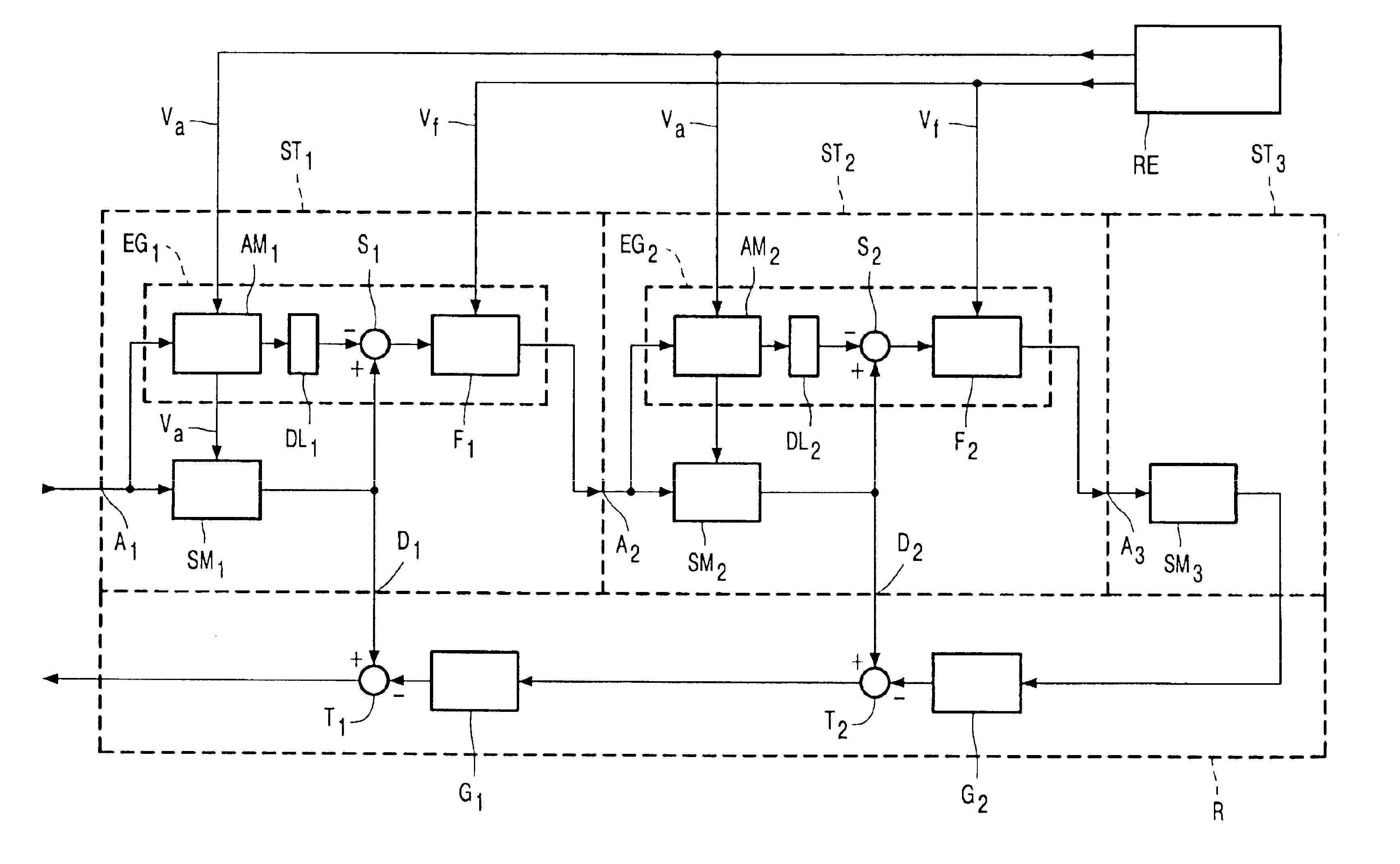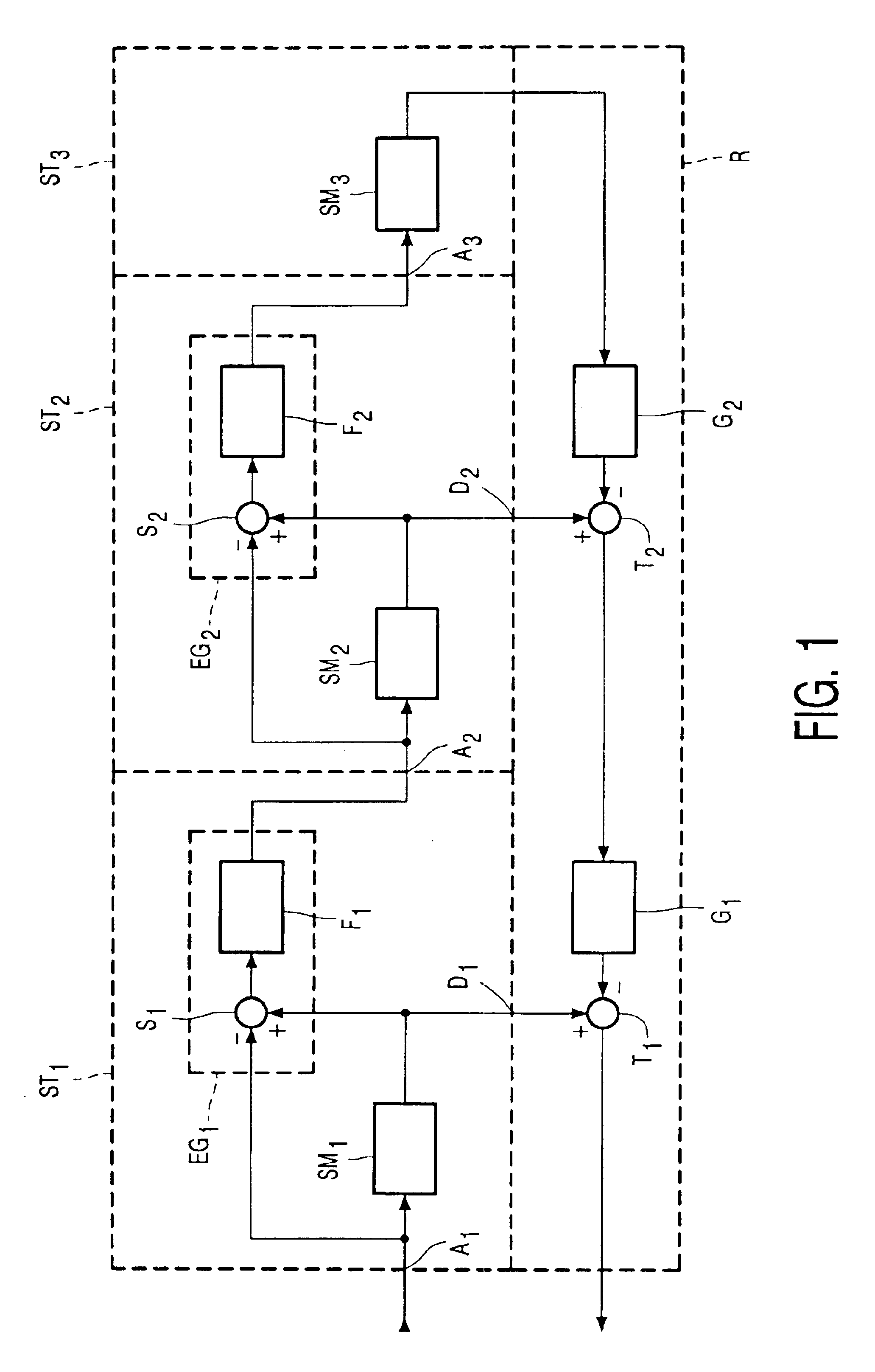Pipeline ad converter
a technology of ad converter and pipeline, which is applied in the field of pipeline ad converter, can solve the problems of too cumbersome present-day semiconductor technology, 864 mhz and achieve the effects of no nonlinear distortion, wide dynamic range, and poor signal-to-noise ratio
- Summary
- Abstract
- Description
- Claims
- Application Information
AI Technical Summary
Benefits of technology
Problems solved by technology
Method used
Image
Examples
Embodiment Construction
The pipeline AD-converter of FIG. 1 comprises three AD-converter stages ST1, ST2 and ST3 in cascade. In practice the cascade may comprise any number of stages larger than one. The first stage has an analog input A1, a digital output D1 and a synchronous ΣΔ modulator SM1, whose input is coupled to the analog input A1 of the stage and whose output is coupled to the digital output D1 of the stage. The stage further comprises an error signal generator EG1, which encompasses a subtracter S1 for subtracting the analog input and the digital output of the stage, and an analog low pass filter F1 for low pass filtering the result of the subtraction and for applying the so low pass filtered result to the analog input A2 of the second AD-converter stage ST2. The second stage ST2 is identical in construction to the first stage and the elements of this second stage have the same references as the elements of stage ST1, except in that the subscripts thereof have been increased by 1. The last stage...
PUM
 Login to View More
Login to View More Abstract
Description
Claims
Application Information
 Login to View More
Login to View More - R&D
- Intellectual Property
- Life Sciences
- Materials
- Tech Scout
- Unparalleled Data Quality
- Higher Quality Content
- 60% Fewer Hallucinations
Browse by: Latest US Patents, China's latest patents, Technical Efficacy Thesaurus, Application Domain, Technology Topic, Popular Technical Reports.
© 2025 PatSnap. All rights reserved.Legal|Privacy policy|Modern Slavery Act Transparency Statement|Sitemap|About US| Contact US: help@patsnap.com



